
Facebook Twitter Instagram YouTube
Written on: July 26th, 2023 in Education and Outreach, Wetland Research
By Olivia Allread, DNREC’s Wetland Monitoring and Assessment Program
Imagine yourself at one of these places in Delaware: up a rooted trail in the Piedmont region, down a sandy path near the coast of the Atlantic Ocean, or along a pondside trail in a mature upland forest. You snap a few photos and stop along the way to look at some wildlife, then you pop a squat next to some shiny leaves and tree with vines to chug your water with an afternoon snack. When you get home, you’re feeling refreshed, in the Zen zone with nature, and head to bed for night. The next day you awake to the feeling of an…oozy, itchy, rash? Rash?! Yep, there it is. The gleaming redness from coming into contact with poison ivy.
Many of us have been there, and a few of us have had the chance to meet some of the rarer plant species even worse than poison ivy. For this month’s blog post, we’re taking a look at the poisonous and dangerous plants that call Delaware home, many of which are found throughout the state’s wetlands. Though some are elusive others are easy to encounter, being able to identify these species can be an important step for smoothing sailing in the great outdoors.
Poison Ivy, Sumac, and Oak
Let’s start with the more notorious of the bunch, Poison Ivy (Toxicodendron radicans). This species grows plentiful pretty much anywhere – roadside, wetlands, public parks, forests, along the water’s edge, your backyard. In the early spring and fall the leaves of the plant are red or orange, and by the time summer rolls around they are a noticeable shiny green. The plant can grow as a woody vine up high or in a shrub-like fashion low on the ground, with each leaf consisting of three leaflets. All parts of poison ivy contain a dangerous skin irritant which most folks are sensitive to, and develop a reaction anywhere between 8 to 48 hours after touching it or encountering objects that have touched the plant.
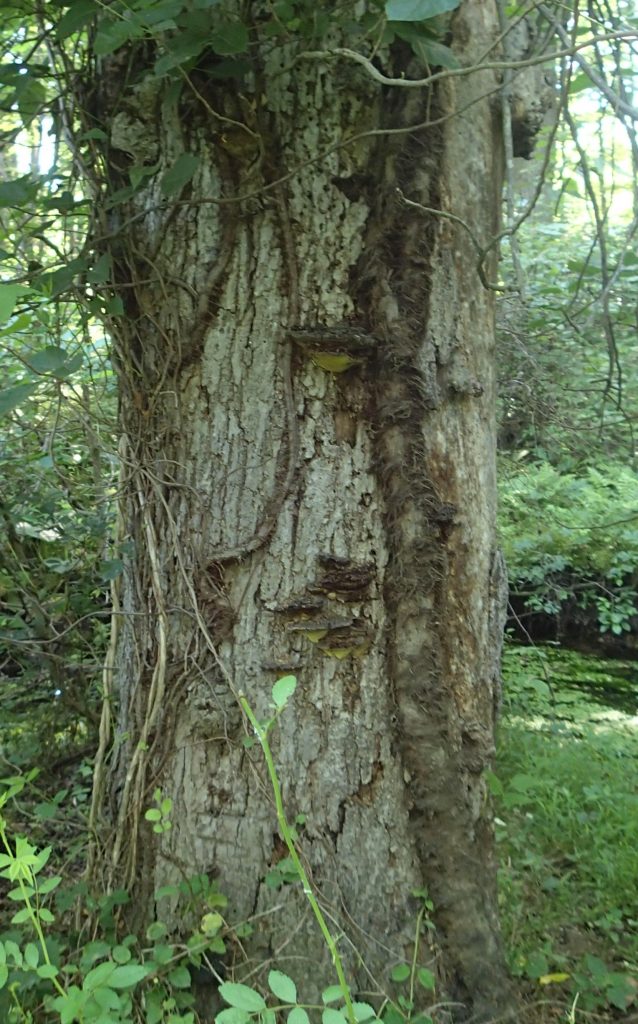

Poison sumac (Toxicodendron vernix) and poison oak (Toxicodendron pubescens) are more uncommon to the average person but are often seen in wetlands. Sumac is a close relative to ivy and oak yet tends to more allergenic and is distinctly taller than the other two species, reaching up to 20 feet tall. This plant can be identified by its large compound leaves with 7 to 13 leaflets, red stems, and clusters of waxy berries produced in late summer. Moving on to poison oak, this species leaves resemble an oak leaf (hence the name), but it is not a member of the oak family. This plant is also a low shrub that shares poison ivy’s three-leaf clusters, except its leaves are fuzzy and lobed with rounded tips. At most the plant grows about 3 feet tall and changes color seasonally; the leaves are green in the spring, yellowish-pink in the summer, and brown in the fall.
So, what is the common denominator between all three of these species? Urushiol. This light, colorless oil is released through all parts of the plant and when it comes into contact with human skin, an allergic reaction can begin. Reactions include itchiness, red rashes, swelling, and blisters, and the sensation for some can feel relentless. Urushiol is pretty toxic stuff and can remain hidden on tools, clothes, or really anything that has come in contact with the oil. If you have crossed paths with any three of these plant species, you’d most likely know it.

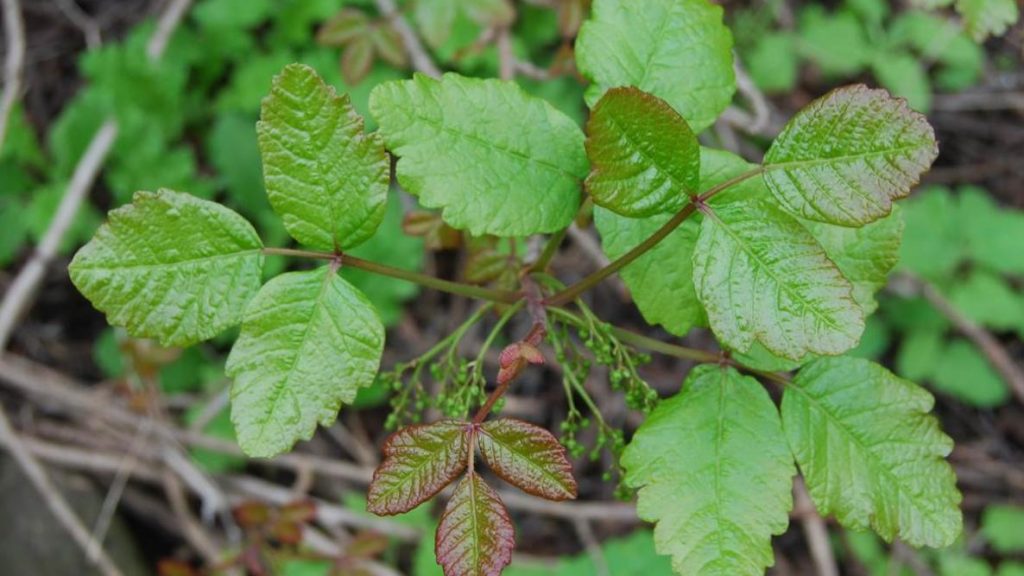
Stinging Nettle and Devil’s Walking Stick
Our next species is not only seen in Delaware’s wetlands, but also is considered a common garden weed. Stinging nettle (Urtica dioica) is an invasive species that can be found in dense stands with stems that pack a nasty punch. This slender, upright growing plant can be anywhere from 6 to 8 feet tall and when in bloom, has greenish-white flowers in branching clusters. The stems of the plant have tiny needle-like stinging hairs that can cause a sensation for a few minutes up to several hours if touched – like a bad bee sting. To avoid the more painful way of identifying a stinging nettle, look for its drooping flowers, hairy stems, and oval, toothed leaves.
As an exotic looking native to the United States, devil’s walking stick (Aralia spinosa) says it all in the name. Growing anywhere from 10 to 25 feet tall, these plants clubbed-shaped branches have vicious prickles that really can getcha’. Not only can the plant be recognized by its sharp spines, but also by its enormous clusters of green leaves that form in a canopy at the top of the plant. The good news about this species is that you’d only encounter the prickles during the first year of growth; as the tree matures, the stems gradually lose their spines and form into more smooth branches. All and all, you don’t want to reach for this woody tree when you need a grab.

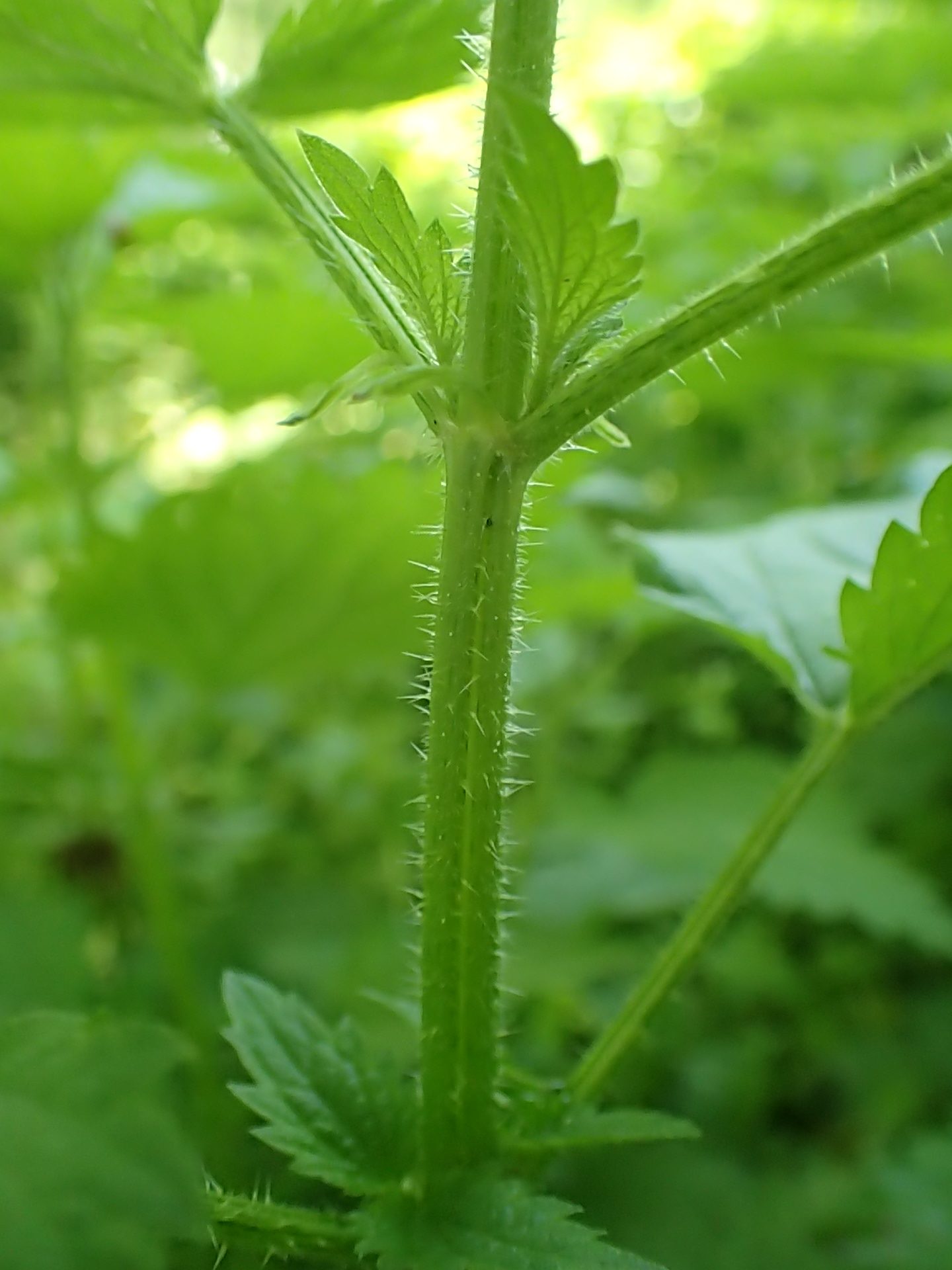
Poison Hemlock and Spotted Water Hemlock
Don’t let their being a member of the carrot family fool you – these last two plants are deadly. Poison hemlock (Conicum maculatum) is native to Europe, Africa and Asia, but invasive in North America. Ranging from 6 to 8 feet tall, this biennial plant (meaning it takes two year to complete a life cycle) is known to grow in meadows, wetlands, ditches, and at the edges of cultivated fields. An easy way to identify the plant is by taking a gander at its stems which are hairless with distinct purple blotches. It also emits an odor, like mouse urine some say, but getting that close to the plant to crush it for a sniff is not recommended. With glossy, dark, fern-like leaves and the physical characteristics, hopefully reading this blog will be your only encounter with identifying this species.
Spotted water hemlock (Cicuta maculata) is native to North America and is often considered the deadliest plant on the continent. The tough part about identifying this species is that the size and color of stems can vary greatly, ranging from solid purple or green, to green with purple stripes or spots. When folks have taken a closer look, it has been noted that the vein pattern, ending at the base of the notch of the leaf edge, is a more reliable form of physical identification. As an obligate wetland plant, it occurs naturally in freshwater swamps, floodplains and marshes, and along banks and roadside ditches. Again, it is considered one of the deadliest poisonous plants in the United States, so keep your distance.
Some key commonalities to remember between these two treacherous plants are that both hemlocks:
You absolutely want to steer clear of both poison hemlock and spotted water hemlock as all parts of the plant are poisonous to animals and humans alike. Some symptoms can be vomiting, stomach pain, diarrhea, seizures, muscle damage, increased heartrate, or potential death (just to name a few). Depending on the exposure – ingestion, inhalation, or direct contact – the severe symptoms can appear as soon as 15 minutes up to a couple hours. These plants are no joke; save the best for last, they say.
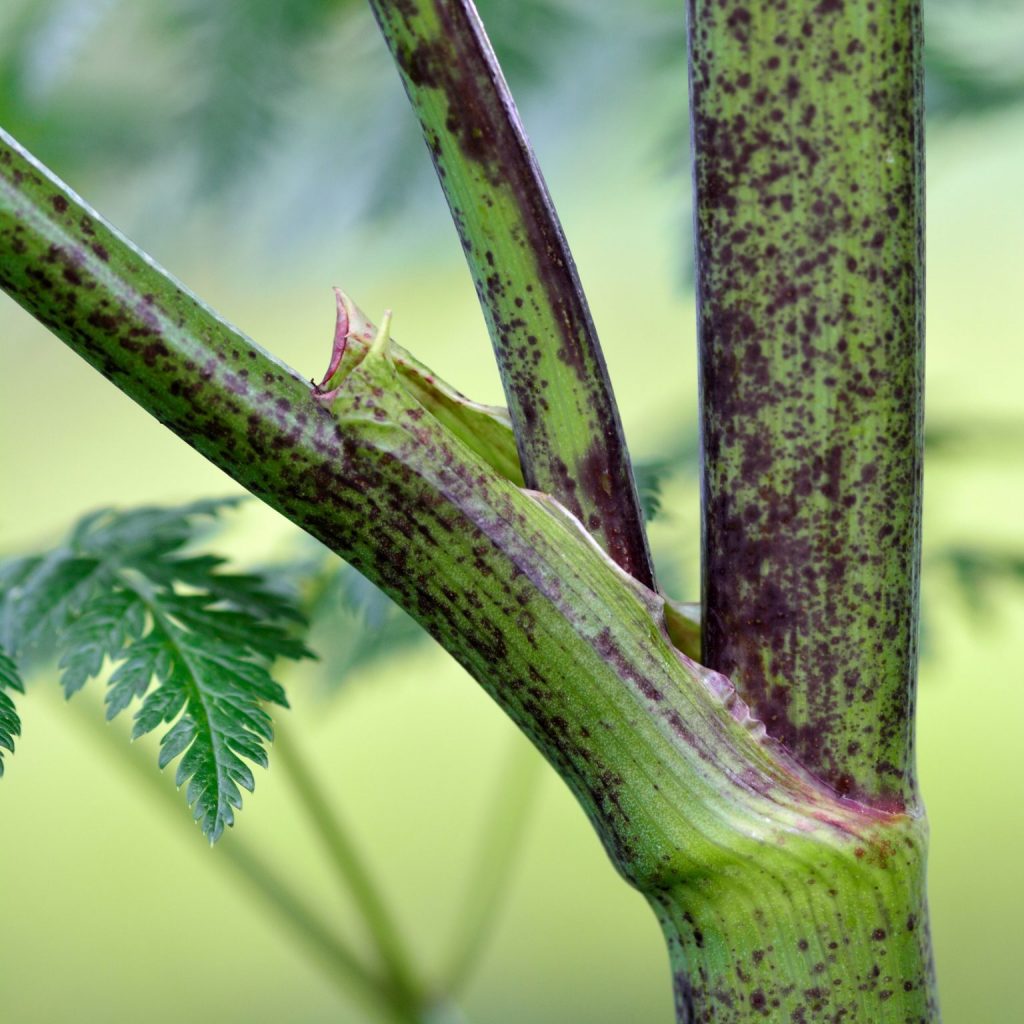
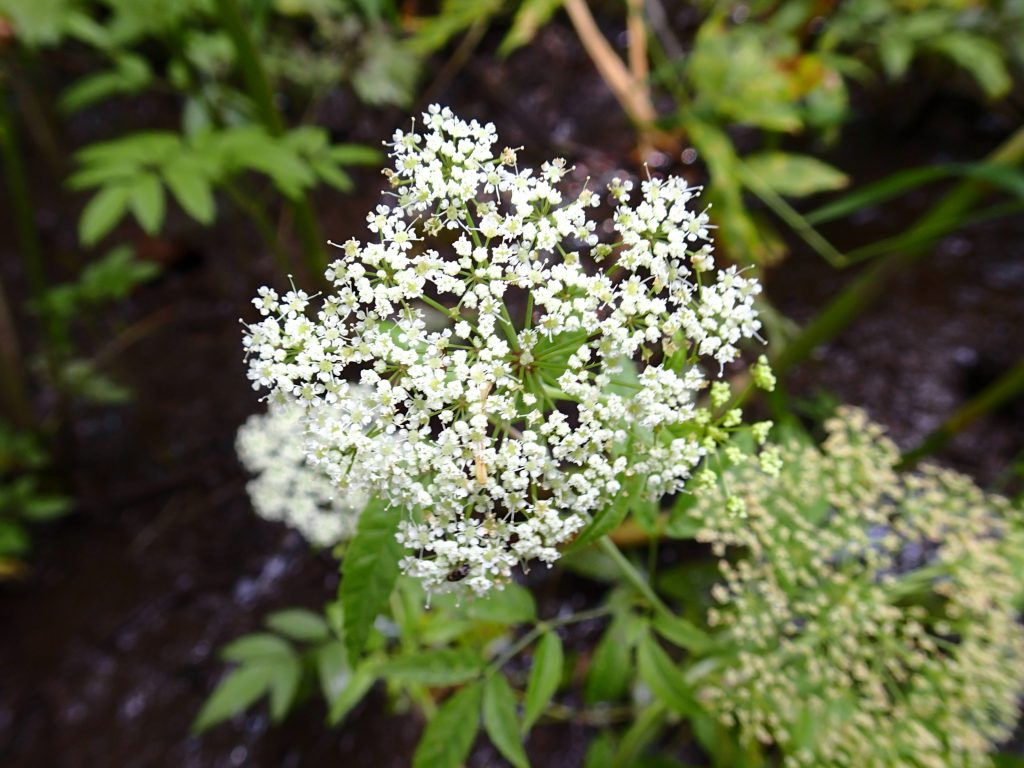
So, are you scared yet? This write-up is not meant to frighten you, but rather inform you. A simple takeaway to consider in the field is this: don’t touch a plant if you aren’t 100% sure what it is! All good scientists use their eyes first. An outdoor journey can take you many places in Delaware, so being able to identify dangerous plants can keep your adventures safe and your eye for the natural world sharp. Let alone give you a few less trips to the local Walgreens for Caladryl or Tecnu.
Want to discover more about wetland plants? Check out the DNREC Wetland Monitoring and Assessment Program’s Delaware Wetland Plant Field Guide.